Diamonds, Settings, Rings and Band Types | Casting House
- March 03, 2021
- Lisa Goldberg
- News
Diamonds, Settings, Rings and Band Types
RINGS & BANDS
It’s helpful to start with the jewelry basics of rings and bands. This portion of the guide covers the standard parts of all rings, including settings, shanks, and gallery styles.
ANATOMY OF A RING
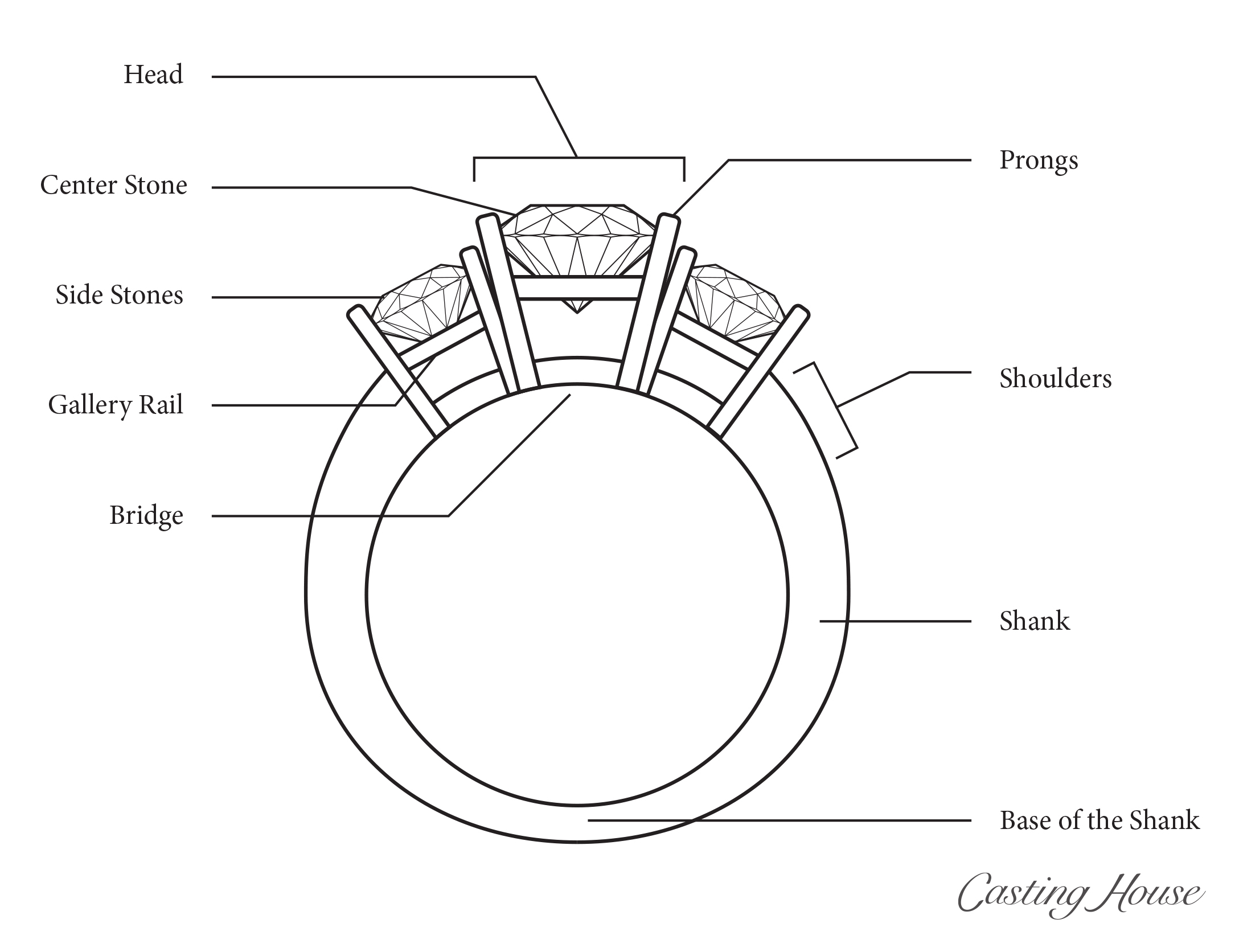
Looking at the ring from a side view and starting at the top, many rings feature a center stone setting held by a setting often referred to as the ‘head’ of the ring. The center stone, which could be diamonds or any other type of gemstone, may be accompanied by side stones. All are held into the setting with metal prongs that gently yet securely hold precious diamonds and gemstones. There are various types of prongs and other setting styles that are also used to hold stones, such as bezels (see Center Settings).
The diamonds or gemstones pictured here are set with prongs and have a gallery rail that helps keep the prongs secure, located about midway from the top of the stone to the ring rail, or bridge. The base of the shank is opposite the center stone - or head of the ring - and as the shank leads up into the top of the ring and its settings, it may change depth or width and be referred to as ‘shoulders’. Depending on the design of the ring, the shoulder area may taper, widen, split, cathedral, or take on a number of different shapes.
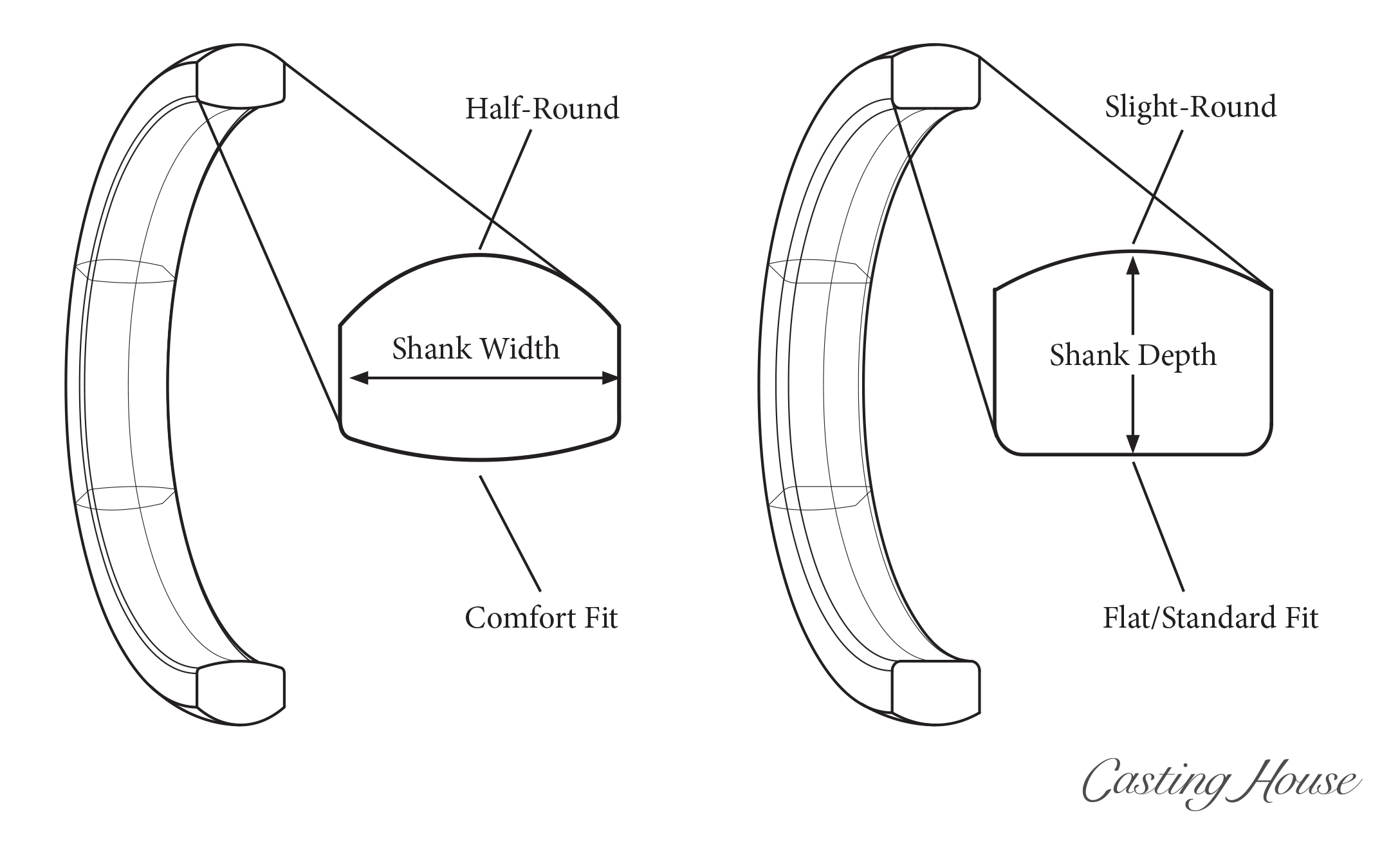
The ring shank will feature an outside shape or profile, which is the top of the shank, opposite the ring rail. Two popular ring profiles are half-round and slight-round. The inside of the ring along the finger is generally either designed to have a curved comfort fit or straighter flat fit, also known as a standard fit.
When working with your Casting House representative, be sure to discuss the desired shank depth and width as well as the profile and inside fit.
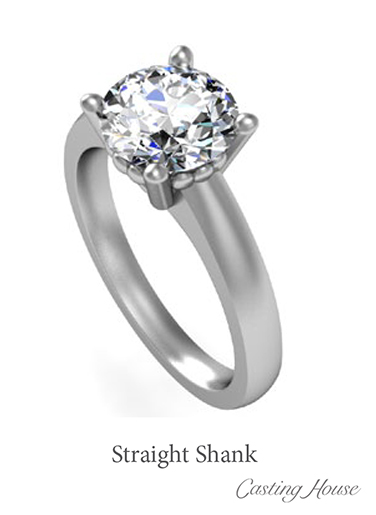
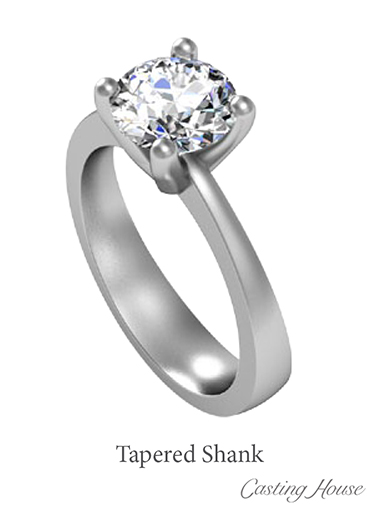
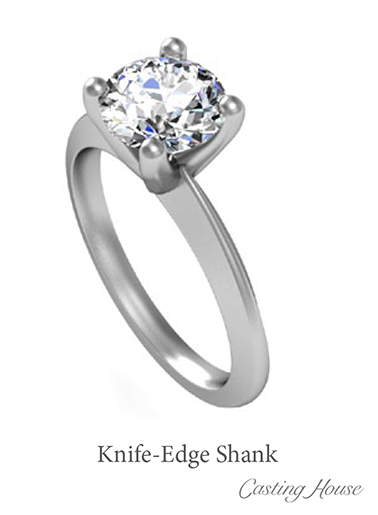
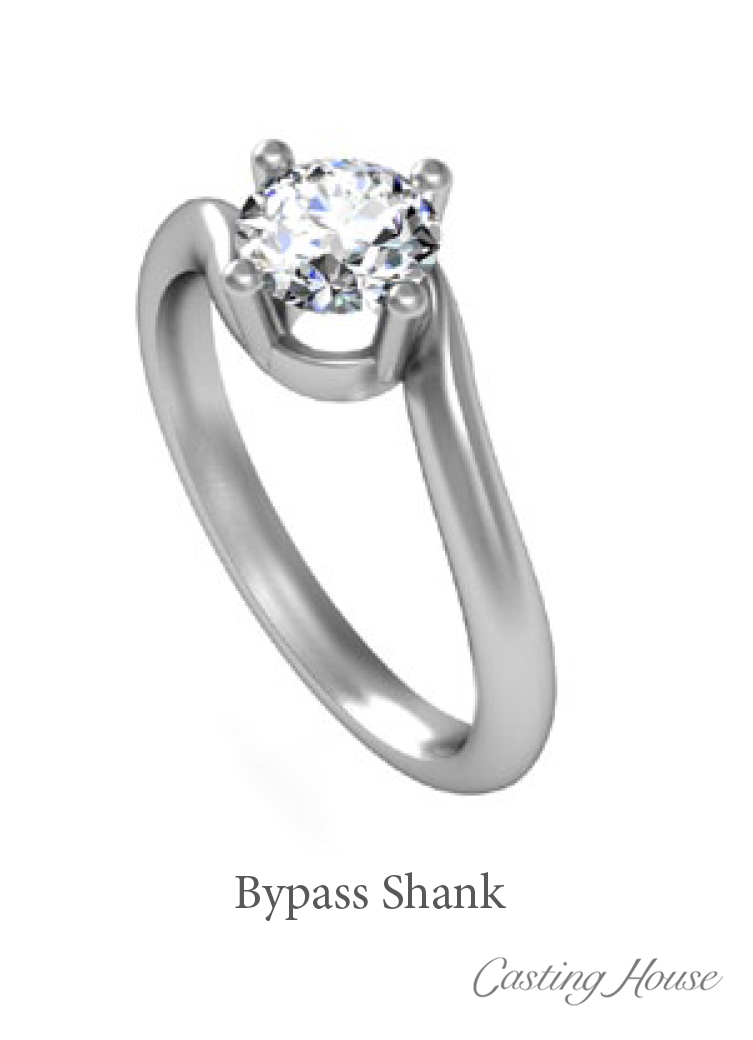
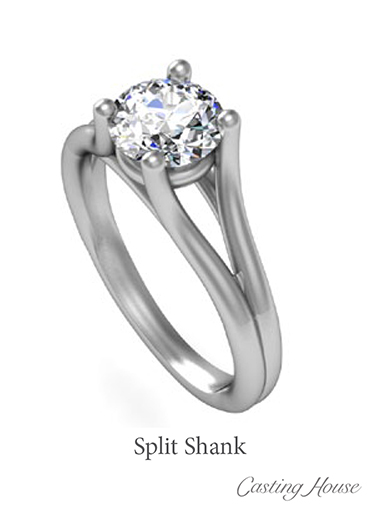
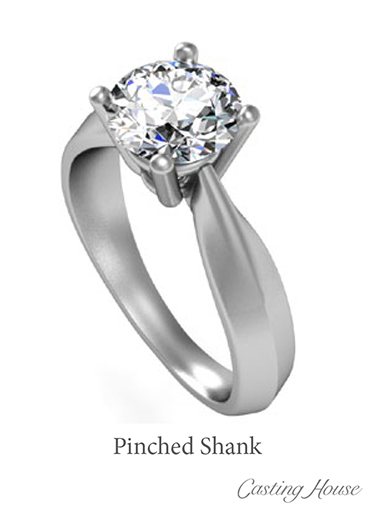
A cathedral – or open cathedral – style is where there is negative space in the shoulders of the ring, leading up to the center setting.
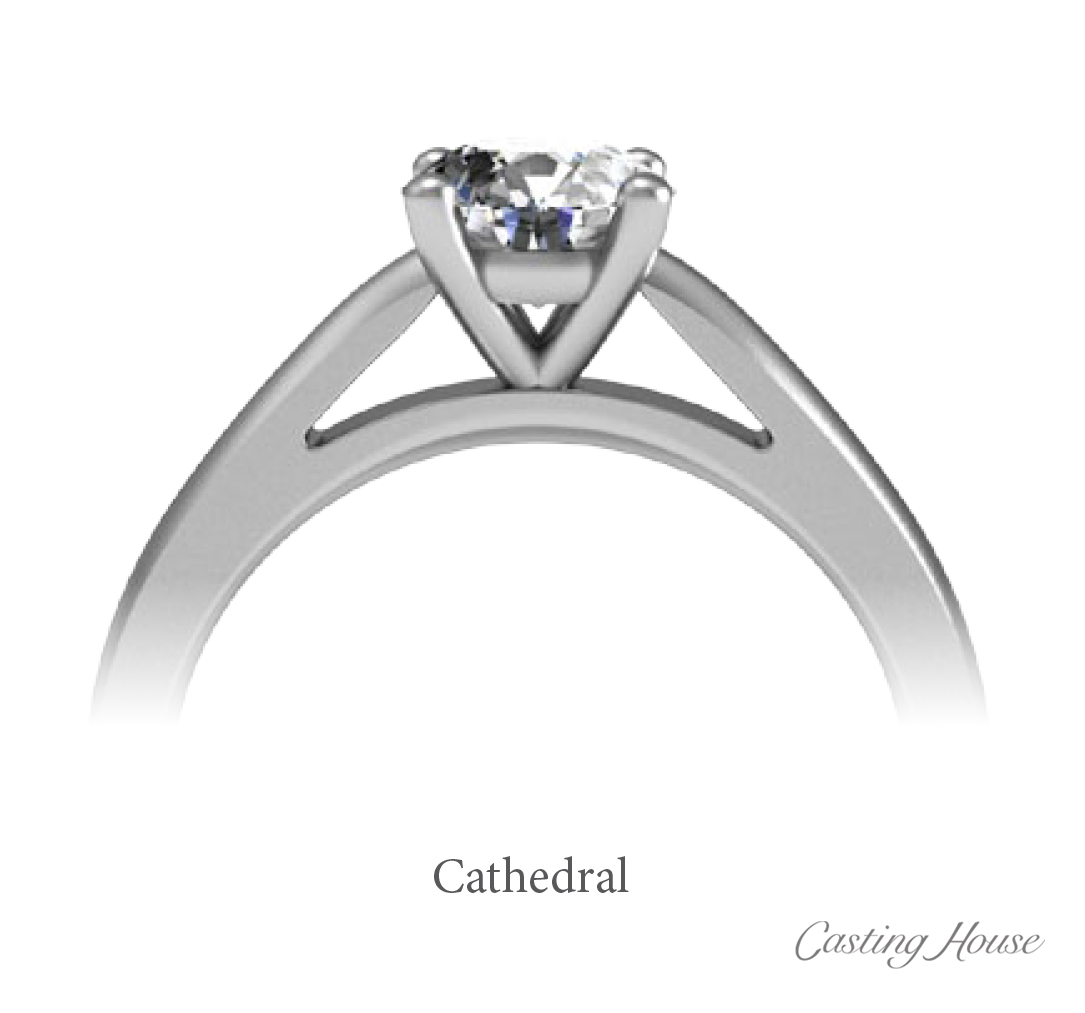
Euro shank designs are part of the bottom of the ring, opposite the center setting. Here the shank is slightly flattened.
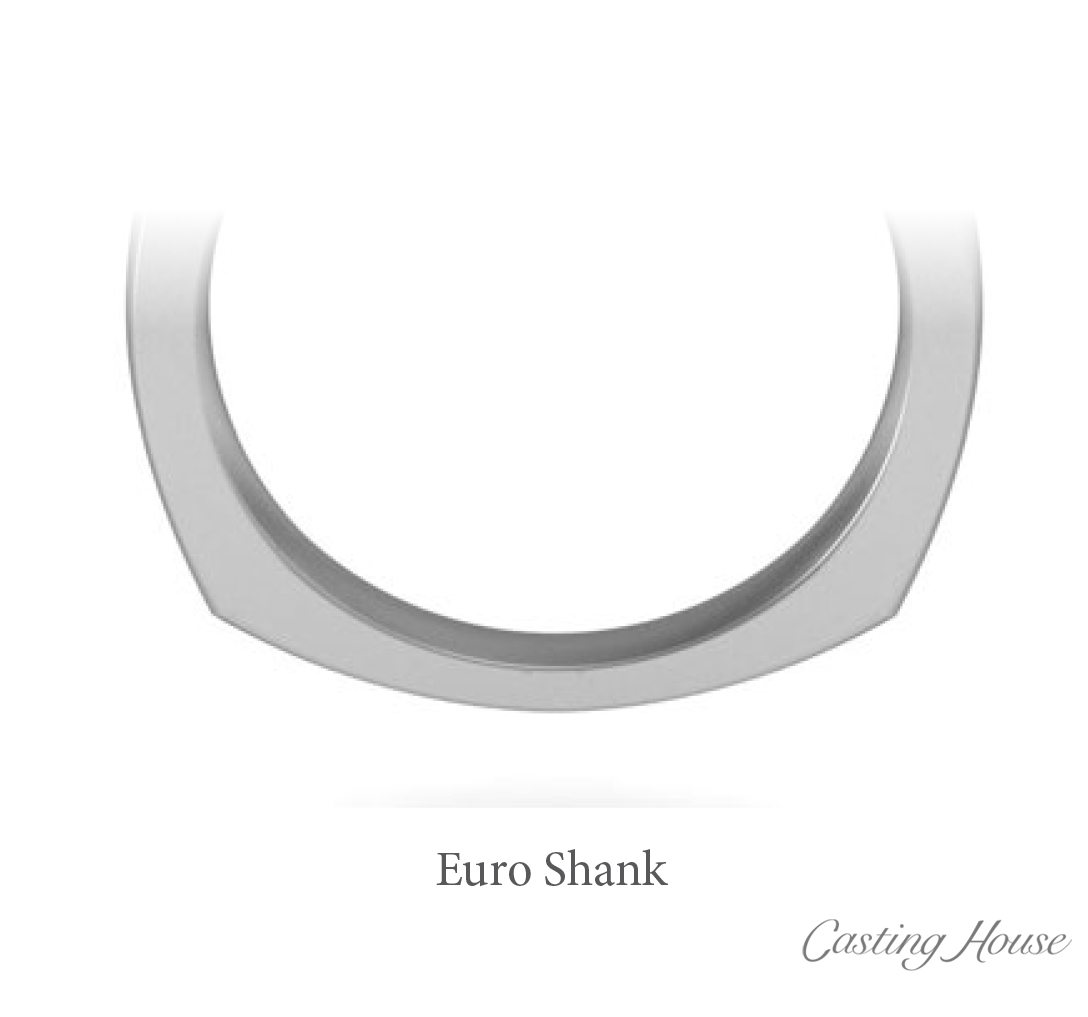
WEDDING BANDS
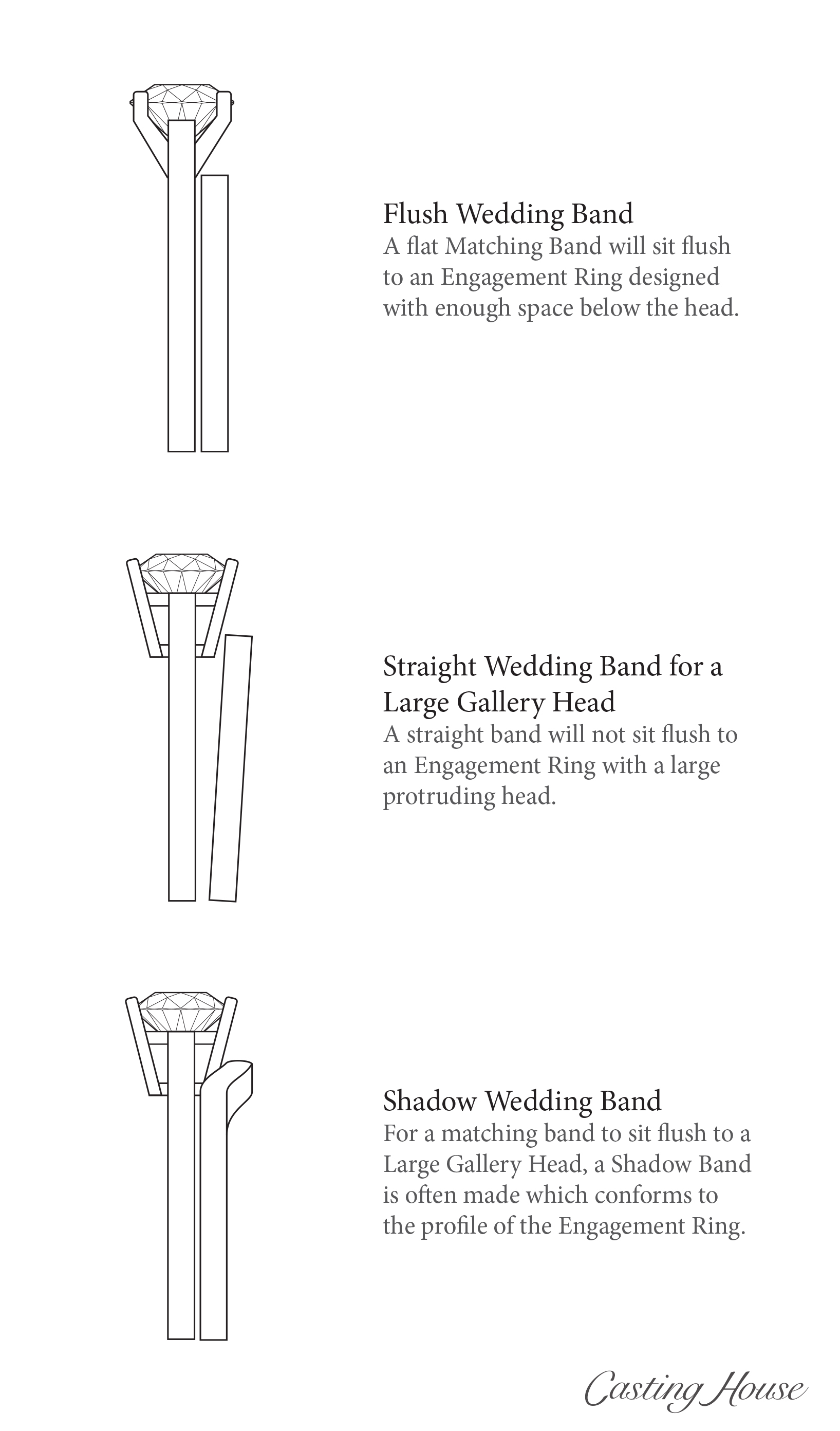
When designing an engagement ring and wedding band combination, it’s important to consider how your client would like the two rings to fit next to each other. Most wedding bands will fit next to an engagement ring in one of three ways:
• Flush:
A flat matching band will sit flush to an engagement ring designed with enough space below the head, between the finger rail and the setting.
• Straight, with a large or low center setting:
A straight band will not sit flush to an engagement ring with a large protruding head or a low center setting
• Shadow:
For a matching band to sit flush to a large or low gallery head, a shadow band is often made to conform to the profile of the engagement ring. Also works well next to engagement rings with unusual center setting designs, such as bypass.
DIAMOND MELEE GENERAL REFERENCE
Diamond and gemstone melee is used in many Bridal designs and custom jewelry designs to add sparkle and interest. Melee can be used in rings, earrings, necklaces, bracelets, and nearly any other jewelry imaginable. While there are many variations on diamond melee setting styles, it’s important for everyone in the design process to use the same terms in order to achieve the intended result.
Diamond melee setting options (pictured below, from top left)
- Delicate French V-Split setting: this setting style is made with delicately split prongs that form a scalloped-shape when viewed from the side
- Pave setting: a dramatic setting that is created using shared prongs and three or more rows of expertly placed diamond melee
- Surface prong setting: in this setting style, small shared prongs are raised slightly above the surface of the metal and tiny cuts are made for the melee culets
- Shared prong settings: a versatile style, typically also suitable for larger gemstones as well, featuring either opened or closed galleries
- Bar setting: an elegant setting style that uses small cuts in metal ‘bars’ on either side of the diamond melee to hold in place
- Bezel setting: a clean-looking style that encircles the diamond melee with a tiny rim of precious metal
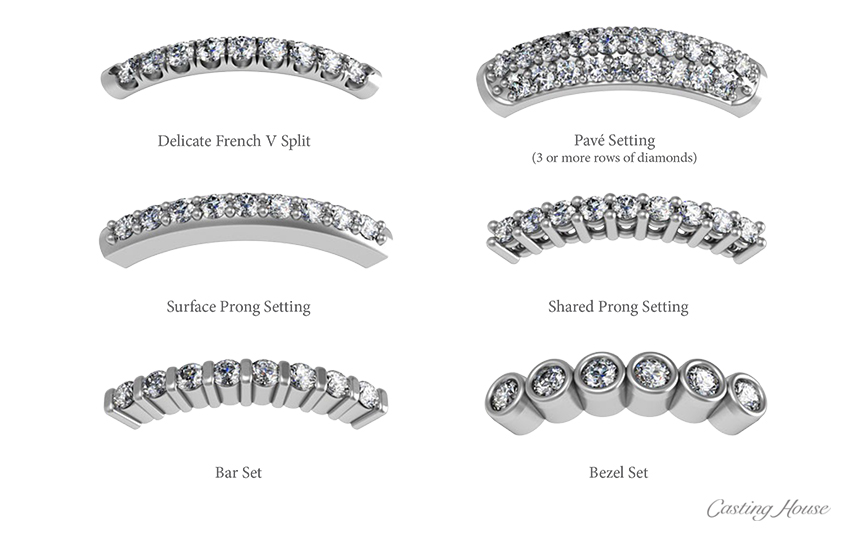
(pictured below, from top left)
- Bead bright setting: this is a very popular and versatile setting style, with shared prongs and usually a slightly beveled side wall
- Scallop setting: another favorite setting style, these are delicate shared prongs that form a scalloped-shape when viewed from the side
- Channel setting: a classic and clean-looking setting style where the melee is set between recessed metal walls, without prongs
- Fishtail setting: an elegant setting where the diamond melee is set low into the metal with delicate fishtail-shaped cuts
- Flush setting: a sleek setting style in which diamond melee is set individually, directly into the metal and without prongs
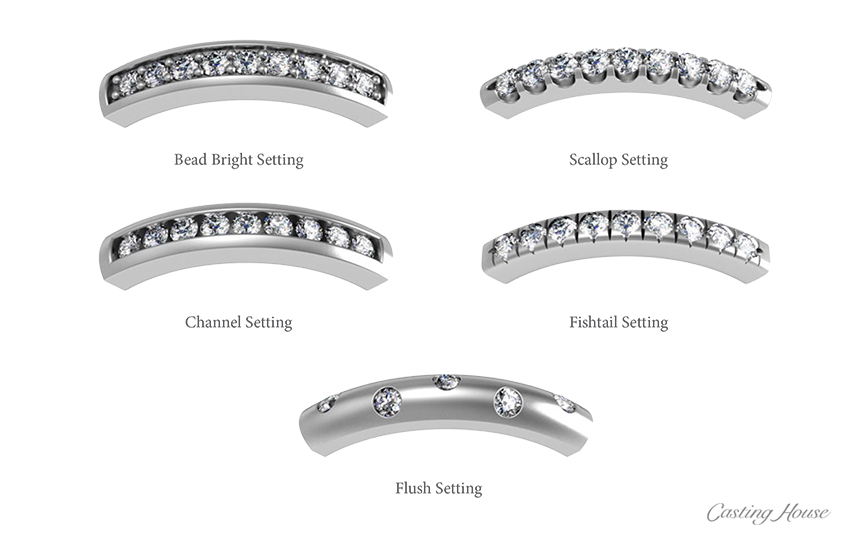
Join Our Newsletter
|
|
Thank you for Signing Up |


Source: https://www.castinghouse.com/jewelry-manufacturing/diamonds-and-setting.html
Discover how the VR Facial Interface and Foam Replacement Set for Oculus Meta Quest 2 can enhance your virtual reality experience. This guide explores the benefits of improved comfort, hygiene, and immersion, along with practical tips for installation and maintenance. Dive into the world of VR with a focus on the details that make your Oculus Quest 2 experience truly exceptional.
Discover the Acer Nitro V Gaming Laptop, a powerhouse designed for gamers who crave both performance and style. This article delves into the key features of the Nitro V 15, including its 13th Gen Intel Core i7 processor, NVIDIA GeForce RTX 4050 GPU, 144Hz FHD display, and advanced cooling system. Learn how this cutting-edge laptop can enhance your gaming experience and why it’s the perfect choice for gamers of all levels. Explore the possibilities with the Acer Nitro V and see how it can push your gaming to new heights.
































































